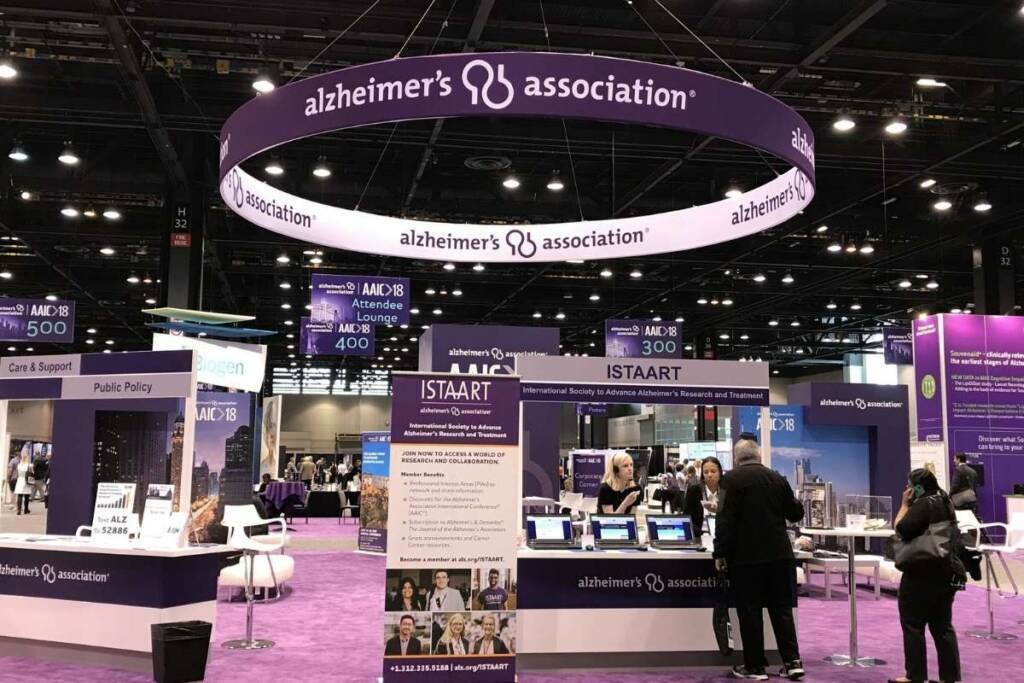Source – Eisai
July 20, 2023 Biogen revealed the results of a comprehensive analysis of the Phase III Clarity AD study, demonstrating the positive impact of lecanemab-irmb (also known by the US brand name Leqembi) treatment on reducing amyloid-beta (Aβ) pathology and associated biomarker changes. These findings, along with the latest data on the subcutaneous (SC) formulation of lecanemab currently in development, were presented at the Alzheimer’s Association International Conference (AAIC) 2023. The US Food and Drug Administration (FDA) granted traditional approval for Leqembi for the treatment of Alzheimer’s disease (AD) on July 6, 2023.
The Clarity AD study was a Phase III global confirmatory trial, conducted as a placebo-controlled, double-blind, parallel-group, randomized study involving 1,795 individuals with early AD (lecanemab group: 10 mg/kg bi-weekly IV treatment – 898 participants, placebo group – 897 participants). Lecanemab achieved the primary endpoint (change from baseline at 18 months on the global cognitive and functional scale, Clinical Dementia Rating-Sum of Boxes [CDR-SB]), as well as all key secondary endpoints with statistically significant results. In November 2022, the Clarity AD study results were presented at the Clinical Trials on Alzheimer’s Disease (CTAD) conference and simultaneously published in The New England Journal of Medicine.
Regarding lecanemab’s impact on amyloid accumulation in the brain, as measured by amyloid positron emission tomography (PET), the Clarity AD study also evaluated multiple A/T/N+ (amyloid, tau, neurodegeneration) biomarkers linked to the pathophysiology of AD. These biomarkers included amyloid (Aβ1-42 in CSF, Aβ42/40 ratio in plasma), tau (p-Tau181 in cerebrospinal fluid [CSF] and plasma), neurodegeneration (total tau [t-tau] in CSF and neurofilament light [NfL] in CSF and plasma), astrocyte activation (plasma GFAP: glial fibrillary acidic protein), and synaptic dysfunction (neurogranin in CSF).
The analysis revealed that lecanemab led to an increase in plasma Aβ42/40 ratio compared to the placebo (adjusted mean change from baseline for lecanemab: 0.008, placebo: 0.001, p<0.0001). Furthermore, lecanemab demonstrated a reduction in plasma p-Tau181 compared to the placebo (adjusted mean change from baseline for lecanemab: -0.575 pg/mL, placebo: 0.201 pg/mL, p<0.0001). Other biomarkers also showed improvement following treatment with lecanemab. These findings suggest that lecanemab affects A/T/N+ biomarkers involved in AD pathophysiology, exhibiting biological effects that slow down disease progression.
In early Alzheimer’s disease, Lecanemab demonstrated a reduction in amyloid markers and showed a moderate improvement in cognitive and functional measures compared to the placebo over an 18-month period. However, the treatment was associated with adverse events. To fully ascertain the effectiveness and safety of Lecanemab, further extended trials are necessary.
In addition, the presentation included baseline characteristics and initial results from the tau PET substudy of Clarity AD. Lecanemab treatment effectively slowed the accumulation of tau pathology in the temporal lobe. Moreover, a clinical effect of lecanemab was observed in the overall population of the tau PET substudy, with a particularly significant effect size seen in the low tau population* defined in this presentation, representing the early phase of AD.





























